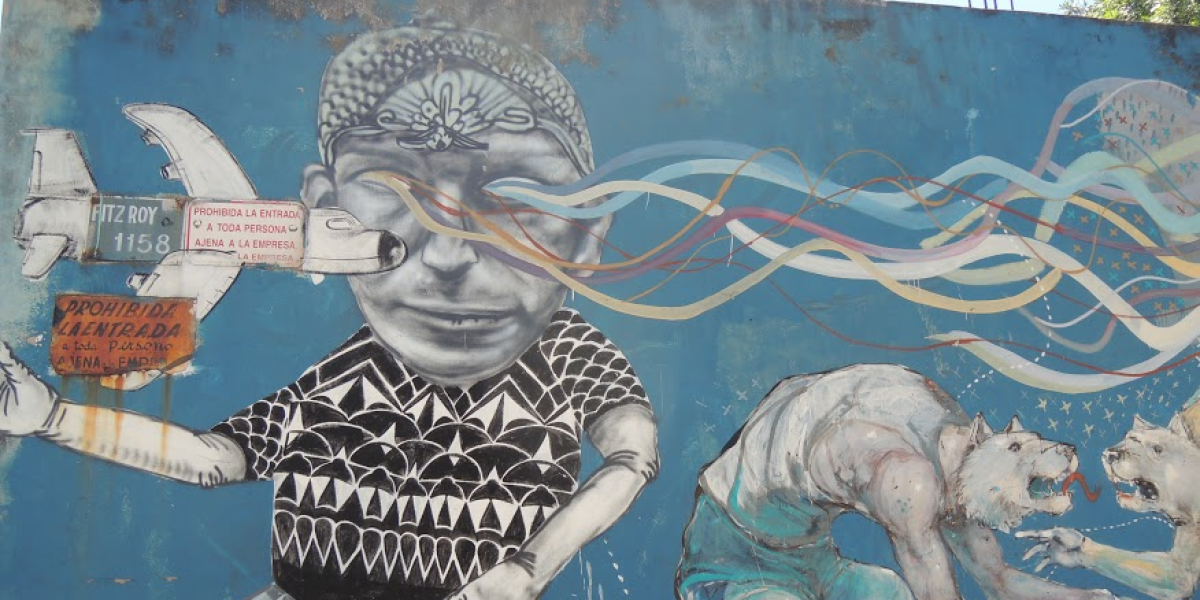
Argentina is a Latin American country where European culture is notably evident, blending with the country’s breathtaking landscapes and variable climate. Being the financial and cultural heart of the country, Buenos Aires caters for a pleasant lifestyle to expatriates. It’s been a few years since Buenos Aires has also become the capital of street art.
Have you ever dreamed of moving to a city where you can come face to face with a piece of art at every street corner? Buenos Aires, the Argentinian capital city, is world famous for being also the mecca of street art. Rich in culture, with an amazing blend of dancing, fiestas and, of course, street art, Buenos Aires promises an outstanding experience to expatriates who are looking forward to move there.
Walking on the streets of the capital city, you will probably be surprised at first by the number of frescoes you will come across. Popular artists, such as Franco Fasoli aka Jaz, have spent hours drawing what seems to be the city's identity. The same artist has made frescoes in Vila Crespo, the Jewish neighborhood, where you can see two big cats facing each other, with their heads composing one large neck between their bodies.

The history of Argentinian street art is closely linked to its political history. In fact, street art emerged between the 1950s and 1960s, when it was defined as a form of political expression. Politicized groups used to be paid to paint slogans that conveyed messages of the political parties. At the same time, more artists started to create what we know as street art today.
Incorporating political or aesthetic images to these messages, graffiti artists began turning white walls across the city into a real field of expression. However, street art only became popular in the 1970s, when the country was shook by a strong political and trade union mobilisation. Graffiti then became the way to convey messages of the resistance that wished for the return of former President Peron.
Following the military junta between 1976 and 1983, graffiti artists were nearly hushed up until 2001. But Buenos Aires experienced a new wave — colourful, playful and humorous murals decorated every street corner, contributing to the city's worldwide uniqueness. Today, Buenos Aires has become a hub for those who wish to see street art at its best.

But if you wish to have a full experience of Buenos Aires' street art, you should know where to go and what to see in each drawing. Zélie, a French expat, discovered the street art culture during her short stay in Buenos Aires in a neighborhood that is very popular with graffiti artists. “I moved to Buenos Aires for four months, from September to December 2015, thanks to an exchange program with the Universidad de San Andres. I used to live at the crossroads between Vila Crespo and Palermo Hollywood. I must say that street art is more pronounced in areas like Palermo and San Telmo.”
Zélie discovered and learned more about street art while hanging out with young Argentinian friends. “I especially liked the diversity in styles and subjects, the omnipresence of art, as well as the intelligent and playful integration of the architecture to the environment. Street art became a conversation topic just like football, politics, music”, she says. “In fact, it is part of the country's culture, and especially that of the youth”.
When we asked Zélie, if there's any piece of street art that she particularly appreciates and would recommend for anyone visiting Buenos Aires to go and see, she says: “If I had to choose, it would be the reproduction of a series of movie posters such as ‘El Secreto de Sus Ojos' by Juan Jose Campanella on the walls of condemned houses in Palermo.”



















